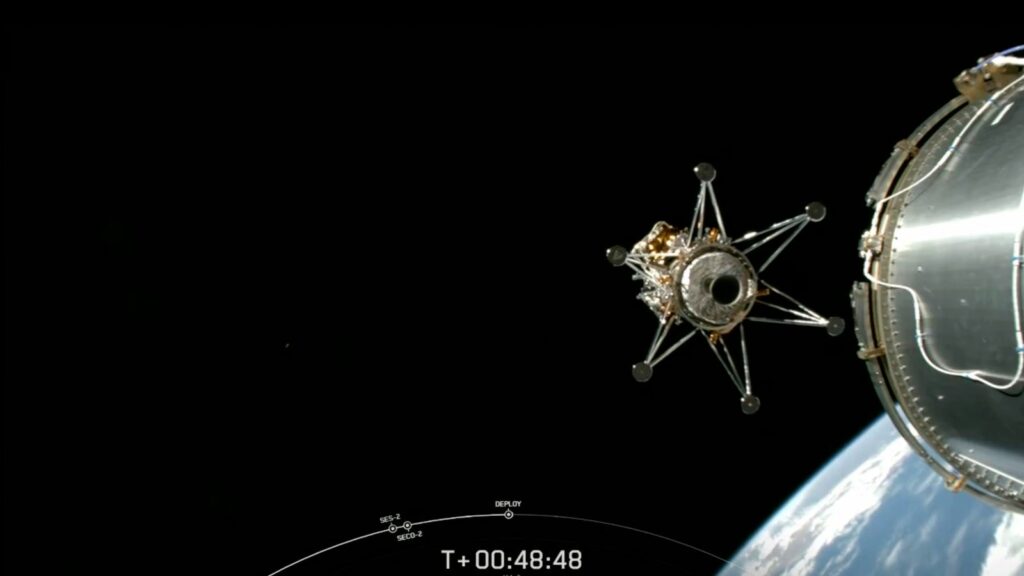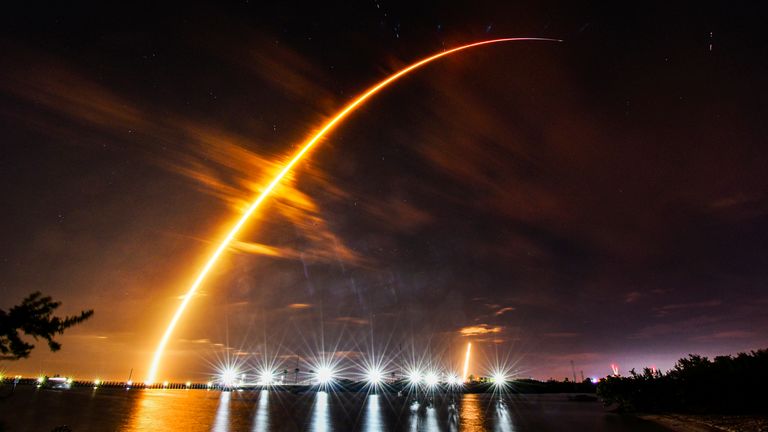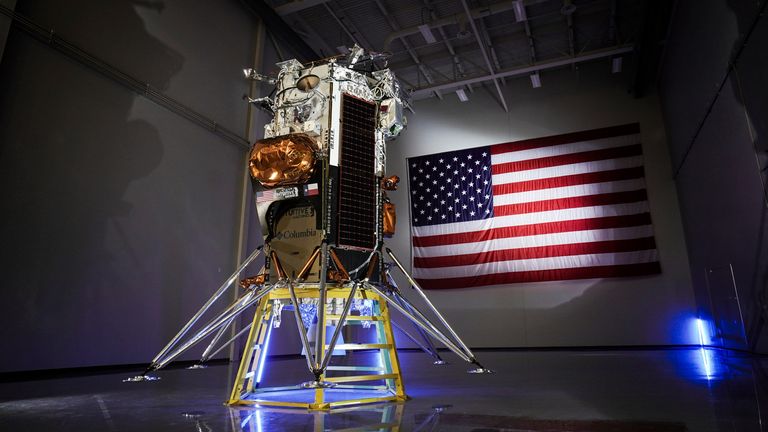So far so good for Odysseus moon lander’s journey of jeopardy into permanent shadow – but there’s a perilous descent to come | Science & Tech News

Odysseus is on its epic journey to the moon.
The 240,000-mile voyage is one of jeopardy and challenge for the spacecraft, just as it was for its namesake in the Greek myth.
Even reaching the launch pad was an achievement.
NASA contracted the Texas-based Intuitive Machines to take several instruments to the moon for a fixed price of $116m (£94m).
That’s well below what it would cost NASA to undertake the same mission. NASA believes that private companies can innovate new ways of getting to the moon for less money.
Lift-off – as it happened:
SpaceX rocket launches for moon’s south pole
Intuitive Machines’ lunar lander separating from the rocket and heading towards the moon. (SpaceX -NASA TV via AP)
So far the mission has gone to plan.
The launch on a Space X Falcon 9 rocket was textbook. Exactly 48 minutes later the phone-box-sized spacecraft was released on target for a lunar landing on 22 February.
It will be a perilous descent to the moon’s south pole.
The region has many more craters, cliffs and boulders than the equator, where the Apollo landings were in the 60s and 70s.
And the sun, low on the moon’s polar horizon, also casts deep shadows that can confuse the automated landing systems of spacecraft.
But it’s those shadows that are the reason for going to the pole.
Read more:
The new space race that could change everything
Japan’s fluffed moon mission was far from failure
Peregrine Mission-1’s January launch ends in disappointment

A SpaceX Falcon 9 launching from Kennedy Space Center. (Malcolm Denemark/Florida Today via AP)

Intuitive Machine’s IM-1 Nova-C lunar lander in Houston in October 2023. (AP)
Inside permanently shadowed ‘craters of eternal darkness’ the temperatures are as low as -230C – easily cold enough to freeze water in layers of ice, or perhaps Arctic-style permafrost.
That would provide hydration for astronauts. Split the water molecule, H2O, and you also have oxygen to breathe and hydrogen to make rocket fuel.
Suddenly a moon base starts to make more sense, with astronauts able to stay for prolonged missions.
But first scientists need to get spacecraft into the craters to see how much ice there is.
And Odysseus is the start of that, testing out equipment needed for future precision landings in such a hazardous region of the moon.

Recent Comments